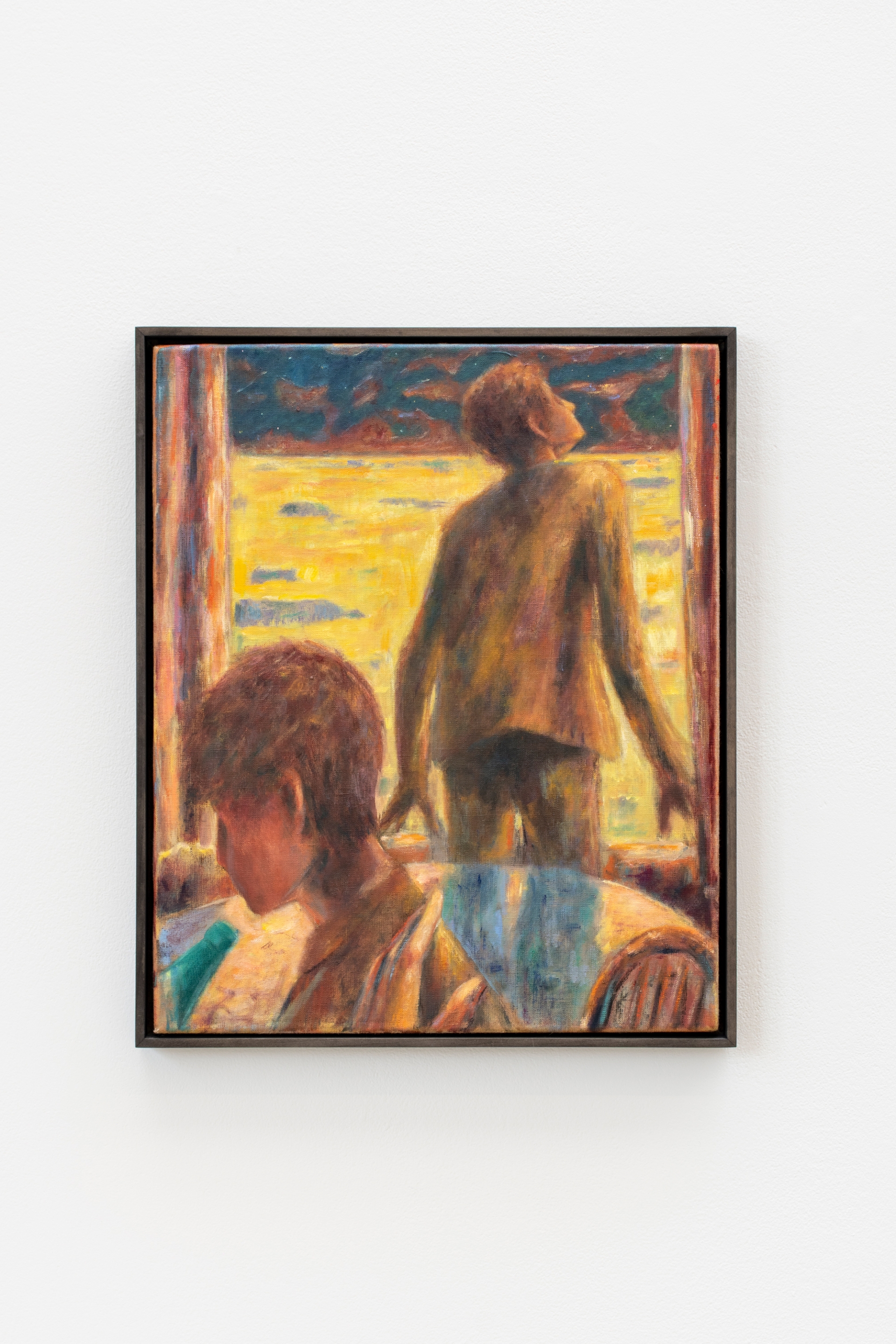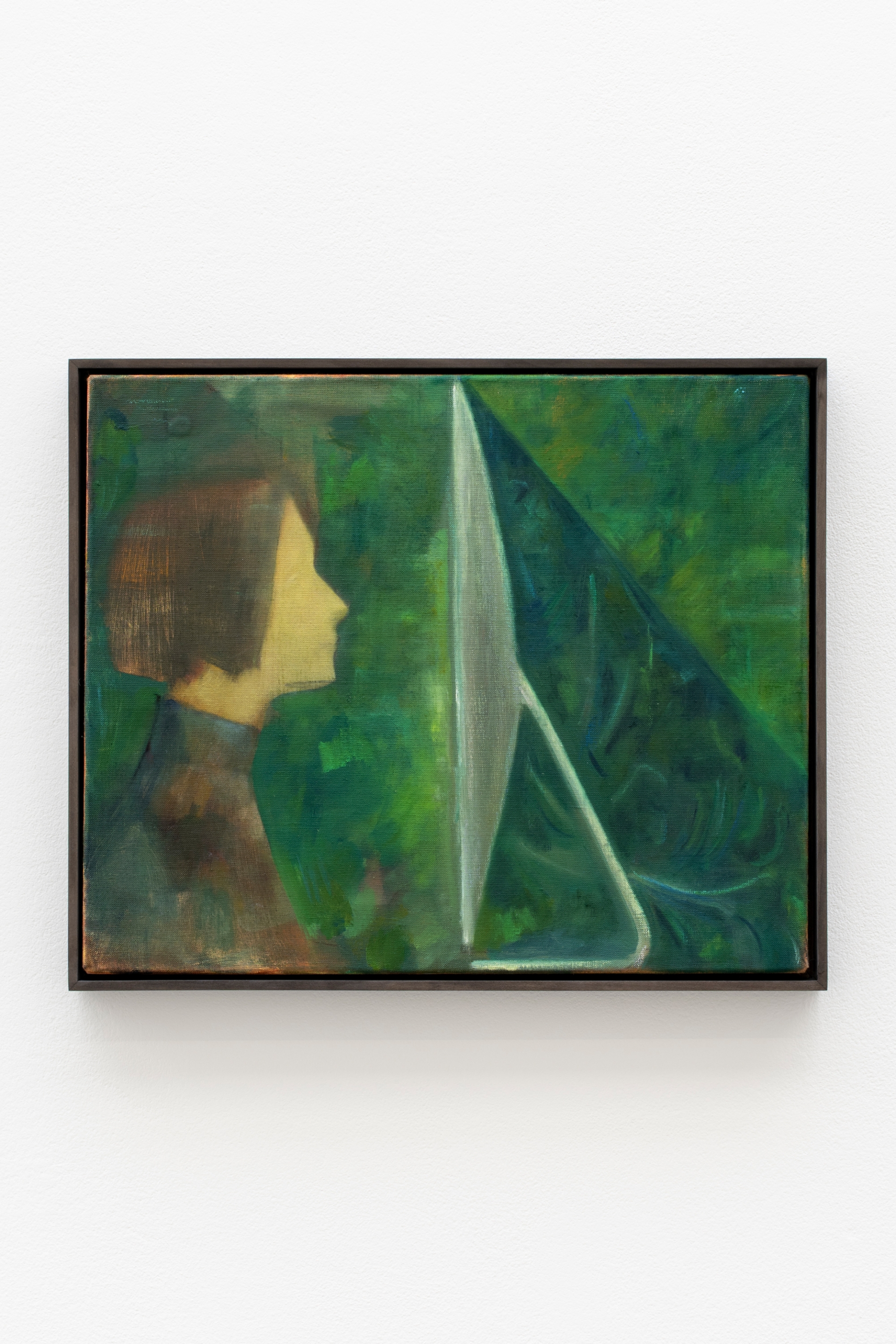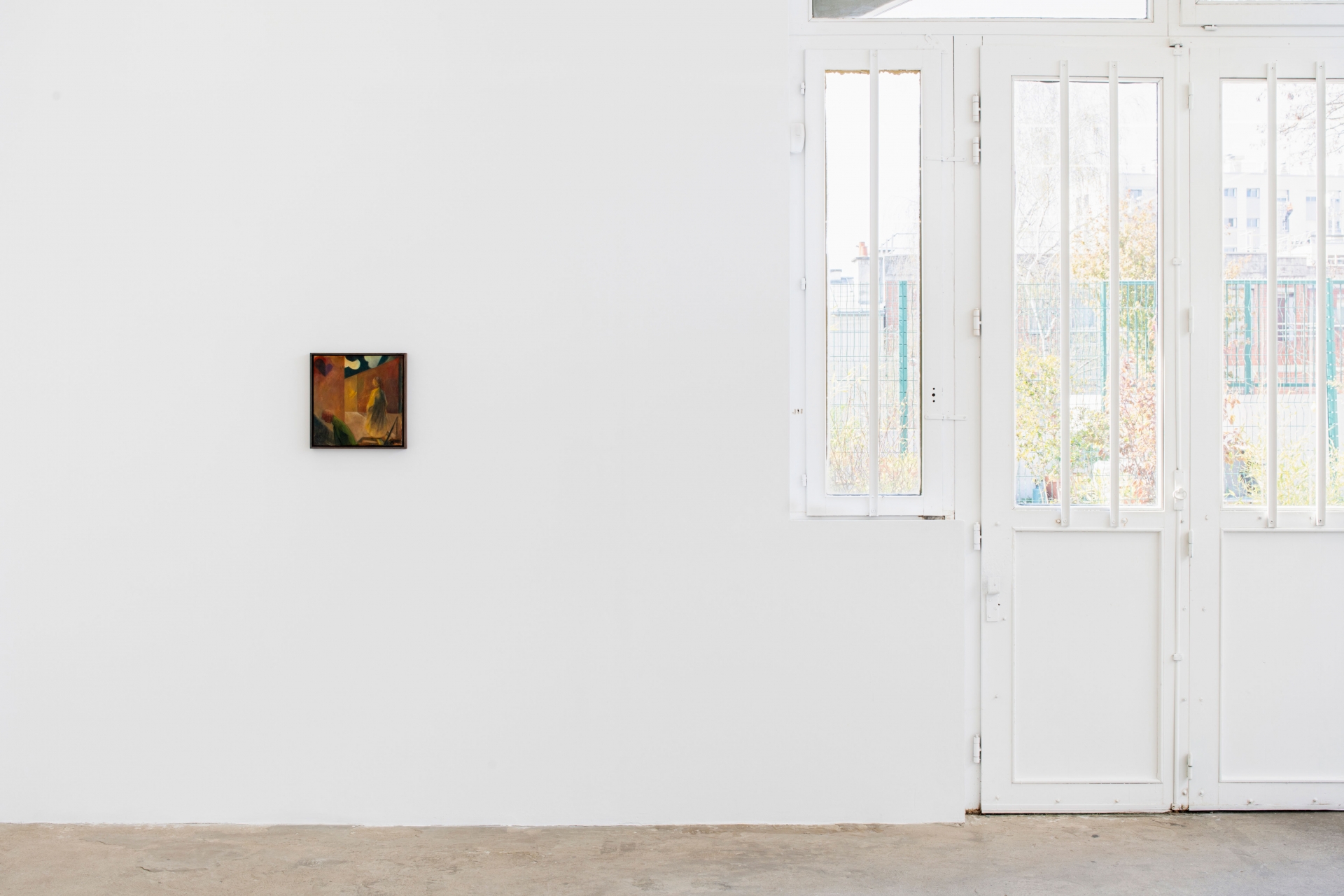Ernst Yohji Jaeger
LunatiqueParis
Intentionally non-historic, creating a subtle balance between abstraction and figuration, Ernst Yohji Jaeger’s painting aims at freeing itself from the borders of identity, of time and social constructs. As Reilly Davidson wrote about his work: ‘The world he occupies is free of attachments and dialogues with artists across time and space’.
His sources are as varied as the plurality of images that make up our modern visual universe: films, mangas, video games, classic paintings, memes… He takes a particular interest in the processes of circulation, appropriation and pollinisation of pictorial representations as, for example, how the work of Marie Laurencin (who has a museum in Japan containing over 600 pieces) has greatly influenced the Shojo manga genre (manga with a female orientation). Which, in turn, has been a major influence on many contemporary painters. Having grown up with the Internet, Ernst Yohji Jaeger has forged his own history of art, which means being able to grant value to previously ignored postures, while abolishing any aesthetic hierarchal dogma.
Each painting starts with a long abstract préparation; this consists in covering the surface with a mixture of colours that produce a rusty orange. Then, there begins a variation in the compositions, which are superimposed, bringing together a pell-mell of characters, architectural sections and objects coming from still lifes. Each version bears the ghost of the previous scene, but they all retain a specific object, a posture, or a precise form, coming directly from what the painter can observe around him, in the sky, in the town, or in his catalogues. These are conceived borrowings, ‘pictorial ready-mades’: a radiator by Bonnard, a heart drawn with a spray can on the door of a building in Vienne, a blue pattern with green spots by Felice Casorati, a composition of concentric clouds seen from his studio’s glass roof. During this process of covering, decisions are born and become fixed. There are appearances and disappearances. Without any premeditation. Each painting is thus a sum of different states, to be deciphered both in the past and the future, giving the spectator an uncanny sense of déjà-vu.
This method (which isn’t really one) leads to a mysterious iconography, in which the objects seem suspended rather than anchored, and where the characters, often seen side on, are in transit. We do not know where they are, where they are going, or even who they are. They are androgynous, ageless characters moving through ’the ambiguous world of the indeterminate’ (as Redon put it).
If the artist has also looked at Klimt and the Nabis, he has not kept the hieratic look of their characters. Here the lines are contorted so as to adjust to the suppleness of the bodies, with an inspiration that looks more towards manga. These bodies are there, between diverse passageways - all opening out into the distance -, and familiar objects, some of which play on a subtle game of mirrors, scattering our gazes into a play of infinite correspondances. They are rocked by a light but persistent wind, which we seem to see in his compositions. On taking a closer look, luminous traces, like whirls, rise up around the characters. They are invisible presences, diaphanous chrysalides that bring to life the impression of a hypnotic world, perhaps on the verge of tipping into the supernatural. The unrealistic shades - rust, ochre, brown, emerald, cobalt - which are always slightly veiled, accentuate the timelessness of the scenes which seem to slip away from any form of history. They are colours that could belong to a world that is backlit compared to ours. And this is perhaps the magnetic strength which is so hard to describe and that makes for the singularity of this painting: that strange familiarity in which we are both here and elsewhere, in a parallel world, where shadows are reflected and mingled.
Volontairement anhistorique, créant un équilibre subtil entre abstraction et figuration, la peinture d’Ernst Yohji Jaeger cherche à s’émanciper des frontières de l’identité, du temps et des constructions sociales. Comme l’écrit Reilly Davidson à propos de son travail : « Le monde qu’il occupe est sans attache et dialogue avec des artistes à travers le temps et l’espace. »
Ses sources sont aussi variées que la pluralité des images qui constituent notre univers visuel contemporain : films, mangas, jeux vidéo, peintures classiques, mèmes… Il s’intéresse en particulier aux processus de circulation, d’appropriation et de pollinisation des représentations picturales, comme par exemple, la façon dont l’œuvre de Marie Laurencin (dont il existe un musée au Japon avec plus de 600 œuvres) a fortement inspiré le genre du Shojo manga (manga à orientation féminine). Qui a son tour a eu une influence majeure sur des peintres contemporains. Ayant grandi avec Internet, il s’est forgé sa propre histoire de l’art, permettant d’accorder de la valeur à des postures qui ont été négligées jusqu’ici, et en abolissant les hiérarchies du dogme esthétique.
Chaque tableau commence par une longue préparation abstraite consistant à recouvrir la surface d’un mélange de couleurs produisant un orange tirant vers le rouille. Puis, commence une variation de compositions, qui se superposent les unes aux autres, additionnant pêle-mêle des personnages, des pans d’architecture, des objets propres à la nature morte. La composition porte le fantôme de la scène précédente, mais elle garde de façon spécifique un objet, une posture, ou une forme précise, provenant directement de ce que le peintre observe autour de lui, dans le ciel, dans la ville, ou dans ses catalogues. Ce sont des emprunts assumés, des « ready-made picturaux » : un radiateur de Bonnard, un cœur dessiné à la bombe sur la porte d’un immeuble, un motif bleu à pois verts de Felice Casorati, une composition de nuages concentriques saisis depuis la verrière de son atelier. Au fur et à mesure de ce processus de recouvrement, les décisions naissent et se figent. Il y a des apparitions et des disparitions. Sans préméditation. La peinture est ainsi la somme de différents états, qui se décline au passé comme au futur, conférant au spectateur une sensation de déjà-vu troublante.
Cette méthode (qui n’en est pas une) a pour conséquence une iconographie mystérieuse, où les objets semblent suspendus plus qu’ancrés, et où les personnages, souvent vus de biais, sont en transit. On ne sait pas où ils sont, où ils vont, on ne sait même pas qui ils sont. Des personnages androgynes et sans âge évoluant dans « le monde ambigu de l’indéterminé » (selon la formule de Redon).
Si l’artiste a beaucoup regardé Klimt et les Nabis, il n’a pas retenu l’aspect hiératique des personnages représentés. Ici le trait se contorsionne pour s’ajuster à la souplesse des corps, dans une tradition s’inscrivant peut-être plus du côté du manga. Ils sont là, entre divers passages - autant de voies ouvertes sur le lointain -, et des objets familiers dont certains, par le biais de jeux de miroir subtils, distribuent le regard dans un jeu de correspondances infinies. Ils sont bercés par un vent léger mais persistant, qu’on semble percevoir dans toutes les compositions. A y regarder de plus près, des tracés lumineux, comparables à des volutes, surgissent près des personnages. Il s’agit de présences invisibles, de chrysalides diaphanes qui ravivent l’impression d’un monde hypnotique, peut-être sur le point de basculer dans le surnaturel. Les tons irréalistes - rouille, ocre, brun, émeraude, cobalt - toujours légèrement voilés, accentuent l’intemporalité des scènes qui se dérobent, involontairement semble-t-il, à toute historicité. Ce sont des couleurs qui pourraient être celles d’un monde se trouvant à contre-jour du nôtre. Et c’est peut-être cela la force magnétique si difficile à décrire et qui fait la singularité de cette peinture : cette étrange familiarité dans laquelle nous sommes ici et ailleurs, dans un monde parallèle, où les ombres se reflètent et se confondent.


Ernst Yohji Jaeger, Untitled (Three figures), 2022, distemper, oil pastel, oil on linen, 44,5 × 37 cm

Ernst Yohji Jaeger, Dog Rose, 2022, distemper, oil pastel, oil on linen, 44,5 × 40 cm


Ernst Yohji Jaeger, Screen, 2022, distemper, oil pastel, oil on linen, 37 × 45 cm

Ernst Yohji Jaeger, Untitled (One arm crossed), 2022, distemper, oil pastel, oil on linen, 45 × 35 cm

Ernst Yohji Jaeger, Untitled (One arm crossed), 2022, distemper, oil pastel, oil on linen, 45 × 35 cm. Detail


Ernst Yohji Jaeger, Untitled (Arrangement), 2022, distemper, oil pastel, oil on linen, 110 × 100 cm

Ernst Yohji Jaeger, Untitled (Arrangement), 2022, distemper, oil pastel, oil on linen, 110 × 100 cm. Detail

Ernst Yohji Jaeger, Untitled, 2022, distemper, oil pastel, oil on linen, 30 × 30 cm

Ernst Yohji Jaeger, Untitled (Transit), 2022, distemper, oil pastel, oil on linen, 40 × 45 cm

Ernst Yohji Jaeger, Untitled (Fireworks), 2022, distemper, oil pastel, oil on linen, 130 × 130 cm


Ernst Yohji Jaeger, Untitled (Coin), 2022, distemper, oil pastel, oil on linen, 40 × 45 cm

Ernst Yohji Jaeger, Untitled (Coin), 2022, distemper, oil pastel, oil on linen, 40 × 45 cm. Detail

Ernst Yohji Jaeger, Untitled (Heart), 2022, distemper, oil pastel, oil on linen, 30 × 30 cm

Ernst Yohji Jaeger, Untitled (Heart), 2022, distemper, oil pastel, oil on linen, 30 × 30 cm. Detail

Exhibition views, Lunatique, Crèvecœur, Paris. Photo: Martin Argyroglo
PARIS — Cascades
9 rue des Cascades
75 020 Paris – France
from Tue. to Fri.: 10 a.m. to 6 p.m.
Sat.: 11 a.m. to 7 p.m.
and by appointment
PARIS — Beaune
5 & 7 rue de Beaune
75 007 Paris – France
from Tue. to Fri.: 10 a.m. to 6 p.m.
Sat.: 11 a.m. to 7 p.m.
and by appointment
Contact
PARIS — CASCADES: +33 (0)9 54 57 31 26
PARIS — BEAUNE: +33 (0)9 62 64 38 84
info@galeriecrevecoeur.com